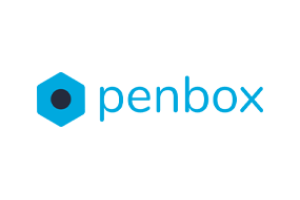How AI tools accelerate product development. 6 tips from Penbox
How AI tools accelerate product development. 6 tips from Penbox
AI providers such as Open AI are creating massive acceleration within product development teams of B2B SaaS companies. Christophe Castan, CPO of Penbox shares 6 tips during the CPO/CTO Summit in Brussels.
Fast software development is crucial in the tough competition between B2B SaaS companies. Penbox has translated this asset directly into a solution that wins it new customers. From now on, Penbox's sales are giving more than a presentation on how their product makes their prospect's administration more automatic and digital. "Tell us about an important process between your administration and your customers," they ask their prospects. 5 minutes later, they show a custom-created digital form that automates the chaotic communication between administration and clients.
"We put our product in their hands immediately," explains Christophe Castan, co-founder and CPO of Penbox. "This is how we convince companies that have been hearing about digitization for years, but have not managed to make their processes more efficient and digital. During the meeting, they experience the power of our solution. The day after, they can already deploy it."

New AI models provide Penbox with the capabilities to carry out this compelling live demo. Christophe Castan explained that at Fortino Capital's CPO Summit in Brussels. "Within 2 or 3 years, process digitalization will be replaced by AI. Nevertheless, our human developers are and will remain crucial to ensure quality and turn complex customer requests into simple interfaces."
Christophe is happy to share his tips for accelerating development by making humans and AI work together:
1. Become an AI prompt engineer
Those who want to get relevant input from GPT or other AI models best learn to prompt as precisely as possible. Again, the saying "garbage in, garbage out" applies.
"Put yourself in the role of teacher for the AI model. Because crystal clear instructions really do make a difference. Teach the model in detail how it should behave. Describe in detail the desired tone of voice, the goal, the format and structure in which you expect the result, the terminology it should use, and so on."
This is called prompting. An AI prompt engineer knows how to get the best results from AI tools through prompting.
2. Test in the Playground
Every AI tool has a sandbox for risk-free experimentation. "This testing is a no-brainer for any SaaS b2b company," Christophe advises. "It doesn't take much time to create something that gives an instant wow effect with customers. Already during the first tests with Open AI, we saw what added value we would achieve. Two days of trial-and-error later, we arrived at our first beta model. In contrast, until last year, it took much more time to build a model, test it, train it and adjust it until it was right."
3. Move from prompts to fine tuning
Prompts are great to help you give a first shot at what a GPT-type of model could provide you. But once you get more insights on how your prompts are working, and you gather more real examples from your customers using your beta version, you should fine-tune an existing model with those examples.
4. Clean the output before inserting it in your tools
GPT-like models cannot be forced with specific output: even if you ask for a JSON format, this could still be surrounded by some additional free text. Make sure you clean your output before using it in your tool.
5. Respect privacy and ethics
Many of the companies in the Fortino community work with customers' sensitive data. Customers trust them. Or they demand guarantees and hold damage claims in reserve in case their privacy is violated. Make sure that you never pass in models real customers sensitive data. Penbox itself never sends customer data in a public API like Open AI, but only works with proprietary models for sensitive data that respect the privacy and ethical rules of their customers.
6. Stay independent of AI tools
Through AI tools, a danger immediately creeps into your SaaS b2b business: dependency. This is dangerous when tools that are virtually free today change their price significantly overnight. For Penbox, independence is the main reason for not embedding AI tools in their own product. "We strengthen our solution and accelerate product development with external AI. But we make sure we remain 100% owners of our code. Not only do we remain (price) independent. We also understand our own code and can train it. Moreover, we can write more complex code that allows us to create a competitive advantage over companies that copy generic code from AI tools."
